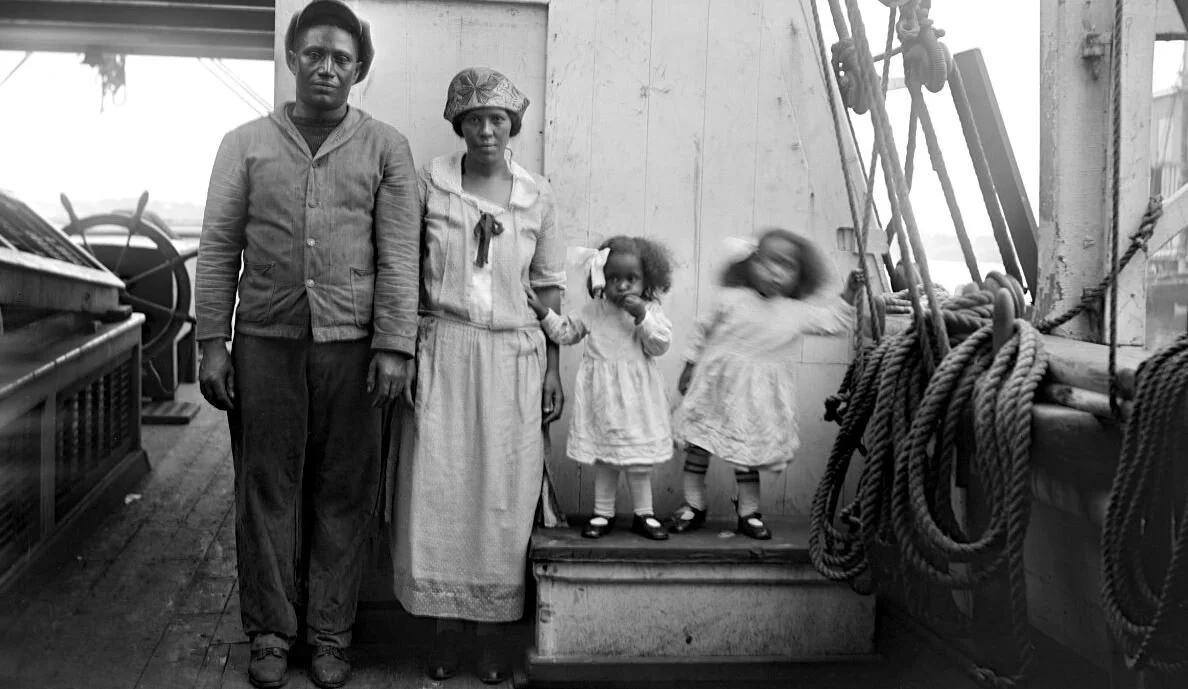As Black History month continues the local history of Cape Verdean immigration comes to mind. This is a significant portion of our Cape Cod story and what makes our place so special.
~ BHS Docent, Cobb House Museum
Brewster ship captains sailing large trading vessels would stop at the Cape Verde archipelago in the central Atlantic Ocean to restock supplies. Cape Verdean men sometimes joined early trading ships as crew, often sought by shipmasters eager to fill berths, and Cape Verdean sailors were renowned in the sea trade. The island men immigrated onboard these vessels as they returned to New England completing their voyages.
In New England opportunities opened up for people willing to work in industrial maritime centers as shore workers, in textile and cordage factories, and agricultural work in the nearby cranberry bogs. There was also the opportunity to join another sea going ship and work up through the ranks with their skill and talent.
The Gomes family. Gomes was first mate — his family was visiting the ship before it set off. Photo courtesy: New Bedford Whaling Museum
The first Cape Verdean islanders settled in the United States in the middle of the nineteenth century. The cranberry industry concentrated south of Boston and on Cape Cod required many workers to harvest which brought more islanders and families to work in the bogs. At the end of the twentieth century, the majority of Cape Verdeans remained in the New England area, mostly Massachusetts and Rhode Island. Population estimates vary for that region, with figures of 13,000 to 21,000 people.
Cape Verdeans before World War I, shaped an identity separate from their African ancestors. They did not think of themselves as "African Americans" in the same way that the descendants of America's slaves did. For them, their European blood was as much a part of their ancestry as was their African blood. Because a majority of them were Roman Catholics in a country where few African Americans shared in that faith, Cape Verdean Americans more often found themselves in the company of other white Catholics. Many of these white Catholics were immigrants from Eastern Europe, also struggling to blend into their new country.
Sorting cranberries, BHS Dugan Collection
Cranberry workers, BHS Dugan Collection
By the 1960s, when the Civil Rights Movement for African Americans gained full strength, Cape Verdean Americans began to interact more frequently as a community. As Cape Verdean Americans intermarried with African Americans of a different background, many of whom were descendants of African slaves and American slave-holders, the cultures began to share traditions and find common sympathies.
Learn more >>





